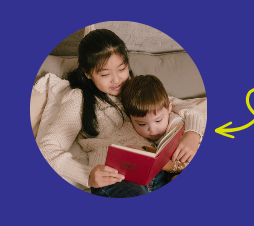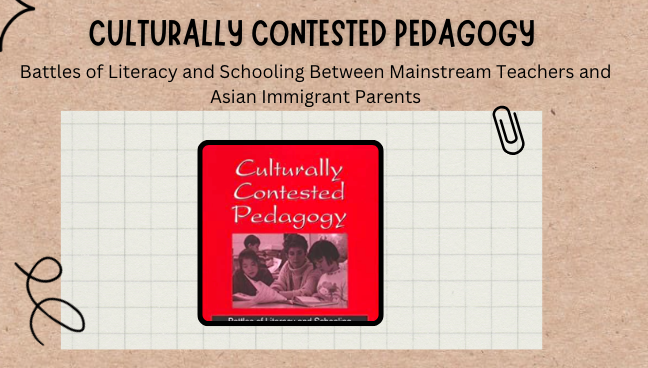To Create Meaningful Connections Between Families and the Classroom
Children learn and grow through diverse interactions with individuals, environments, and experiences. Their time spent with caregivers and families holds particular significance. Strong, healthy relationships within these circles are imperative, as they contribute to the development of children's brains and personalities (Halfon et al., 2001). These relationships also foster a sense of security, enabling children to feel comfortable taking risks and exploring their potential. I have been continuing to seek ways to connect with families beyond the classroom to ensure they feel welcomed and connected. I feel this encourage children to feel more connected to each other when they have positive and consistent interaction with their families about learning.
Collaboration and cohesion among the respected adults in children's lives are essential components of creating a loving early years environment. Effective communication between teachers and parents is beneficial to ensure that the home and school environments align in nurturing the child's growth and development. Schools should strive to provide support for parents, offering opportunities for learning and engagement through programs and parent groups. This collaborative effort aims to instill the notion that "someone will notice, and someone will care" (Melton & Melton, 2015), reinforcing the idea of a supportive community.
Active participation from parents in community settings enhances the support network available to families. By engaging in dialogue and activities within the broader community, families become more attuned to the needs of others, enabling them to offer assistance and support where needed without families having to ask. This collective involvement strengthens the nest of the community, creating a strong network of care and support that benefits all its members.
Artifact 1: Culturally Contested Pedagogy
Community extends far beyond the walls of the classroom, and fostering an open dialogue with parents remains an important aspect of education. This artifact created for LLED 556:Theory and Research in Early Literacy explores Dr. Li's study (2006), emphasizing the significance of a unified approach between parents and the school. Dr. Li underscores how conflicting values between home and school can lead to confusion and affect student progress. The study highlights the essential role of parents as partners in the educational journey.
Dr. Li's work prompted me to place knowing my students and their families at the top of my priority list as an educator. Her insights have been transformative, leading me to realize the profound impact of cultural background on learning experiences. I now go beyond simply acknowledging cultural celebrations; I actively seek ways to embed cultural perspectives into my teaching practices. This shift has allowed me to create a more inclusive and culturally responsive classroom environment, where each student feels seen, heard, and valued.
By embracing Dr. Li's research, I have gained a deeper understanding of the importance of bridging the gap between home and school. This has not only enriched my teaching methods but has also fostered stronger connections with parents and families. I am now more proactive in involving parents in their child's educational journey, recognizing that their insights and perspectives are invaluable to creating a supportive and nurturing learning environment.
Ultimately, we cannot teach when we do not know who we are teaching.
Artifact 3: Community Bikes
This artifact was created as a final project for the Early Childhood Development, Intervention, and Inclusion in Early Childhood Programs course. I propose the implementation of community children’s bikes for each community in Ontario. These bikes would be integrated with schools and childcare facilities, making them accessible to students during the day. Families would be provided with a code or could utilize an app to access and book the bikes for after-school hours. Moreover, additional educators and child specialists could utilize the bikes during sessions or rehabilitation programs.
Research by Smith (2013) highlights that children with physical, intellectual, and/or language disabilities benefit greatly from engaging in play behaviors. However, they may encounter delays in certain forms of play. With parental and educator support, these children can use the community bikes to practice and improve their play skills. Additionally, Mishin et al. (2020) delve into how children with developmental disabilities can learn to ride bicycles with specialized training and individualized supports. Implementing biking interventions not only supports skill development but also contributes to various health benefits for these children.
By providing community children’s bikes, we are not only promoting physical activity and skill development but also creating a shared resource that connects the school environment with the broader community. Parents and educators working together to facilitate bike usage for children not only strengthens the bond between home and school but also fosters a sense of community responsibility towards the well-being of our children.
Artifact 2: Literacy At Home
I believe togetherness can be formed through shared goals and visions. Currently in Ontario and at my school, children are struggling with literacy, specifically learning to read. It is crucial for teachers, community leaders, physicians, social workers, and all others concerned about the health and well-being of children to prioritize ensuring that all caregivers, both in and out of the home, have the knowledge, skills, and material resources to provide children with essential experiences. These experiences are fundamental for laying a strong foundation for literacy in elementary school and beyond (Regalado, M., Goldenberg, C., & Appel, E., 2001).
Recognizing the challenges faced by parents and caregivers, I took the initiative to create a pamphlet aimed at encouraging and educating parents on effective reading strategies they can use at home. During parent-teacher interviews in my Kindergarten class, my co-teacher and I received feedback from parents indicating that they felt overwhelmed or lacked sufficient information on the best reading practices. This pamphlet was distributed to parents of Kindergarten students with the intention of emphasizing a cohesive and collaborative approach between home and school. My hope was that it would encourage parents to reach out if they had questions or required further support.




